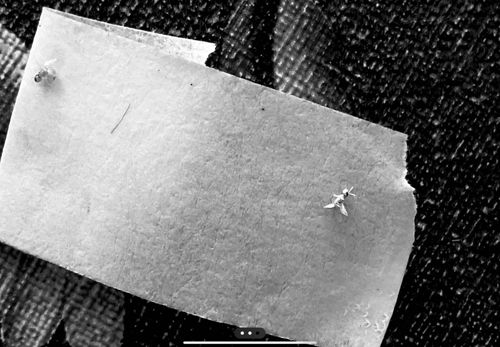Fungus Gnats (Adults)
Scientific Name: Various species within Sciaridae and Mycetophilidae (e.g., Bradysia impatiens)
Order & Family: Order: Diptera, Family: Sciaridae or Mycetophilidae
Size: Adults typically measure 2-5 mm (0.08-0.2 inches) in length.

Natural Habitat
Commonly found in indoor environments, especially around houseplants, greenhouses, and other areas with moist soil, decaying organic matter, and high humidity. Also found outdoors in damp, shaded areas with rich organic soil.
Diet & Feeding
Adult fungus gnats feed on liquids, typically water or nectar. The larvae, which are the damaging stage, feed on fungi, decaying organic matter, and sometimes plant roots, especially in conditions of overwatering or poor drainage.
Behavior Patterns
Fungus gnats are typically attracted to damp environments and decaying organic matter. They have a short lifespan, with adults living for about 7-10 days. Females lay eggs in moist soil, and larvae feed on fungi and decaying plant material. They are weak fliers and often stay close to the soil surface or plant pots.
Risks & Benefits
Potential Risks: Fungus gnat larvae can damage the roots of houseplants and seedlings, particularly in large infestations or for young, delicate plants, leading to wilting, stunted growth, or plant death. Adults are primarily a nuisance, flying around and entering eyes or food. They do not bite humans or animals. Potential Benefits: In outdoor ecosystems, some species may contribute to decomposition processes and serve as a minor food source for other insects.
Identified on: 8/13/2025